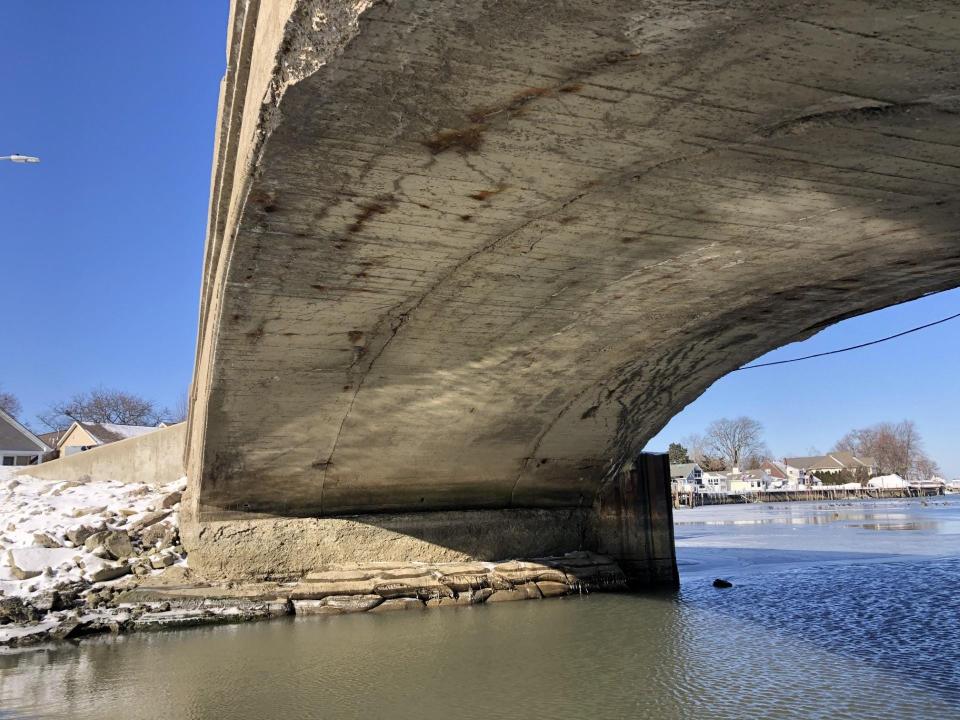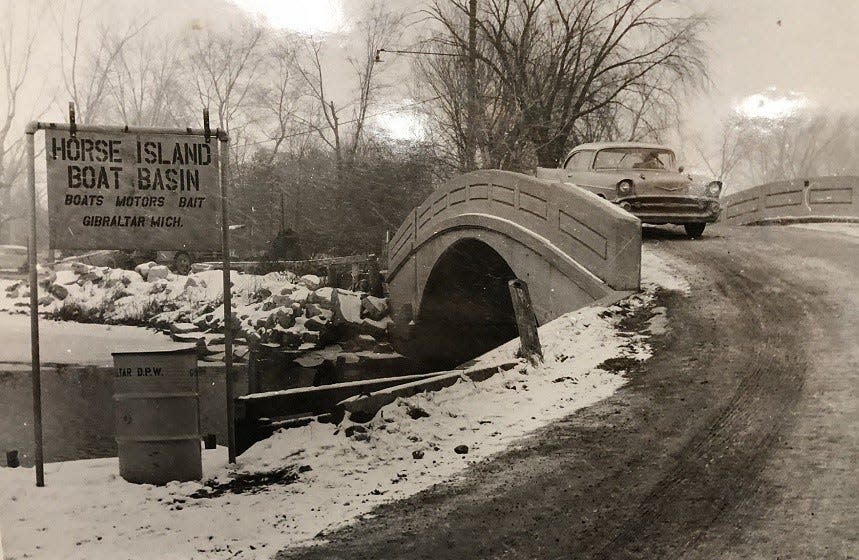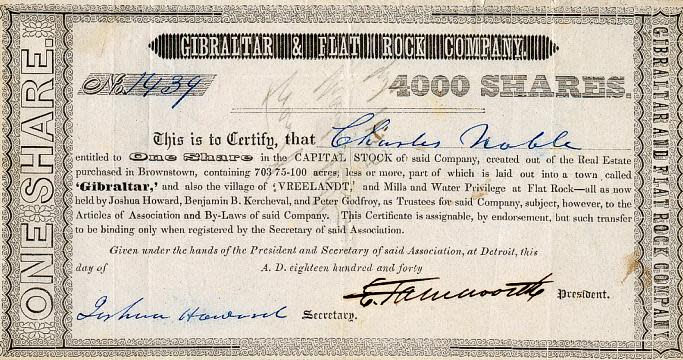A short time ago, I wrote about the recent closure of I-75 to demolish the Luna Pier Bridge. In the past, I’ve written about several historic bridges in Monroe County, including the Monroe and Macomb Street bridges and the River Raisin Bridge — also located over I-75.
Earlier Coverage: The old Luna Pier Bridge was built in 1955
Another interesting historic bridge located in nearby Gibraltar is fighting demolition and has Monroe County connections. The Horse Island Bridge was built in 1925 and is of fixed concrete closed spandrel deck arch design. According to Nathan Holth of HistoricBridges.org, “This small arch bridge is actually one of the most beautiful structures with one of the most unique appearances in the state of Michigan. This bridge features a steep deck camber that follows the shape of the arch itself, making the bridge look more like an old European footbridge than a 1920s vehicular concrete arch bridge. The design of the bridge was selected because the land is low-lying and flat, with the bayou having no valley/depression in which to contain an arch structure that could provide a deck at the level of the surrounding roadway. There is no other known bridge in the state that follows this design. The bridge also retains near-perfect historic integrity.”

Exactly 100 years before the Horse Island Bridge was constructed, efforts to create a shipping canal from the Huron River beginning in Gibraltar to Lake Michigan began following the successful opening of the Erie Canal in 1825. As described in a 2009 Geocities entry for the city, The Gibraltar-Flat Rock Land and Canal Company was organized on July 20, 1836 to build the canal network. They planned to build a canal between Gibraltar and Flat Rock — eventually extending to Ypsilanti and, eventually, reaching Muskegon.

The offices of the Gibraltar-Flat Rock Land and Canal Company were located on the second floor of the two-and-a-half-story hotel in Gibraltar. Former Michigan Gov. Lewis Cass and Daniel Webster, U.S. Secretary of State under three presidents (William Henry Harrison, John Tyler and Millard Filmore) helped financed the venture. Cass, who lived in Detroit, and Webster touted benefits the canal would bring to Michigan. Webster announced he would personally purchase $20,000 of Gibraltar-Flat Rock Land and Canal Company stock.

Eventually, The Gibraltar-Flat Rock Land and Canal Company project brought settlers to the area. It was widely advertised and generated confidence with the pioneers; so much so that lots were sold for $5,000 or more. While dredging for the Gibraltar-Flat Rock Canal did begin along the Huron River, the project failed in 1838.
Concerning the Horse Island Bridge preservation project, Dorothy Wood, founder of the Gibraltar Historical Museum, said, “Efforts continue to outline how bridge restoration would work. At the moment, we are looking to find qualified historical bridge engineers to fully inspect the bridge to determine how to proceed. A $2.9 million federal grant is available for rehabilitation or replacement. If the engineer deems that the bridge is not fit for rehabilitation, we will then have to move forward with replacement. With the new administration that was voted in in November, Horse Island residents are hopeful we will be able to rehabilitate and restore the Horse Island Bridge.”
Subscribe Now: For all the latest local developments, breaking news and high school sports content.
As I wrote previously, the Luna Pier Bridge and the Gaynier Road Bridge are part of a $126 million investment to rebuild more than four miles of I-75 between Erie Road and Otter Creek, including rebuilding five bridges (those already mentioned along with the Otter Creek, Muddy Creek and Sulphur Creek Bridges as well as the entrance/exit ramps at Otter Creek and Luna Pier Roads). Most of the work will be finished this year.
— Tom Adamich is president of Visiting Librarian Service, a firm he has operated since 1993. He also is project archivist for the Greening Nursery Co. and Family Archives and the electric vehicle awareness coordinator at Monroe County Community College.
This article originally appeared on The Monroe News: Some trying to save Gibraltar’s 1925 Horse Island Bridge from demolition
Signup bonus from





